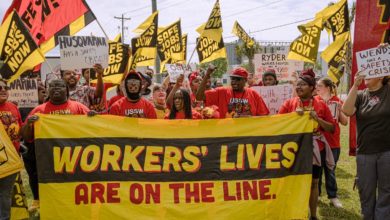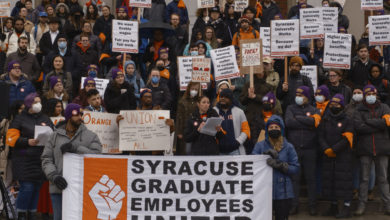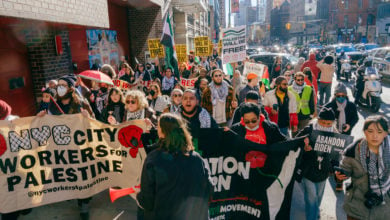On Sept. 21, the Syracuse Common Council met to discuss the Syracuse Police Department’s proposal to install a new video camera surveillance program in the city’s Westside, a predominately Latino and Spanish-speaking neighborhood. Up until that day, the proposal had been moving forward quietly behind closed doors and had not been subject to public debate. In fact, most of the general public only found out about the proposal and the Common Council meeting when it was published in the local Post Standard newspaper the day of the meeting.
The SPD says that the neighborhood is being targeted because it is a “hot spot” for violent crime and “shots fired” calls, although it is not the only area in the city with a higher concentration of gunfire. However, there is little evidence that surveillance cameras deter violent crime in any significant way. A 2002 Home Office study that surveyed 22 studies of police video surveillance in the United Kingdom and the United States found that there was no impact on overall crime.
Recent history has shown that video camera surveillance is just one more tool for police abuse in repressing poor and working-class communities. Studies have shown that officers controlling the cameras disproportionately target women and people of color. In Washington, D.C., police officers used footage recorded by police cameras to coerce patrons of a gay night club.
Due to the hurried nature of the meeting, there was a noticeable lack of representation of the Westside community. Because of recent community organizing around issues of police repression, however, many organizations were able to send representatives to the meeting to voice their concerns or opposition on such short notice.
Ruth Beltran, representing the League of United Latin American Citizens, condemned the secrecy of the proposal and requested that city officials go to the Westside, with Spanish interpreters, to talk to the community there.
Barrie Gewanter, representing the New York Civil Liberties Union, pointed out that it is completely unconstitutional to subject an entire community to surveillance. She said that “This kind of 24/7 monitoring of a residential area runs counter to this essential feature of a free society because it treats all under the camera’s eye as suspects or potential suspects.”
This writer, representing the ANSWER Coalition (Act Now to Stop War and End Racism), noted that the $125,000 that the “pilot” program would cost, a figure which does not include repair, maintenance or operational costs, would be better spent on a community center with paid staff or more teachers for the underfunded schools.
Westside resident Gary Bonaparte said that he “would rather see cameras recording the police.” He shared a recent experience where a police officer entered his yard and threatened to “kick his ass” and “shoot his dog.” He then reminded the Common Council about Raul Pinet Jr., a 31-year old Puerto Rican man who was brutally beaten and killed by several police officers on the Westside just over a month ago.
The ANSWER Coalition, LULAC, and other organizations will be holding a public forum on the Westside in October to allow residents to speak out against the proposal and to continue organizing the community to stand up to police repression.






